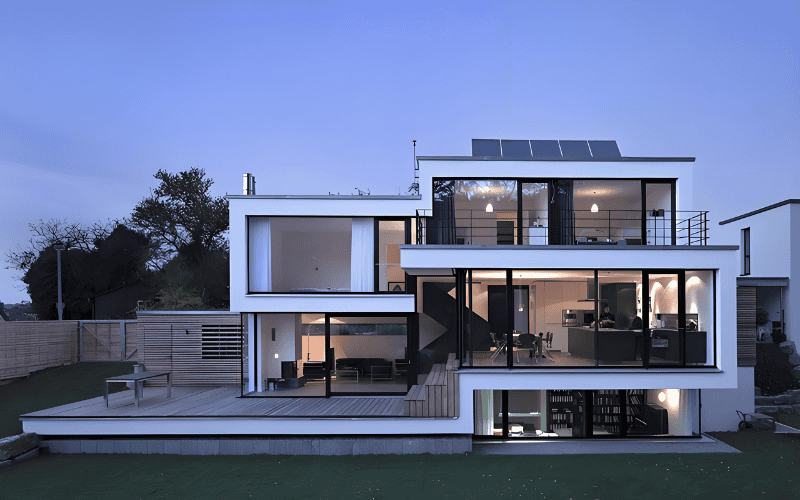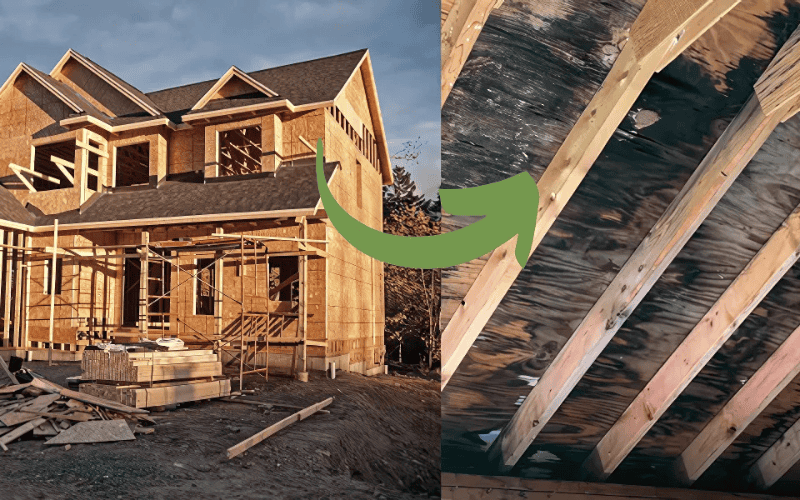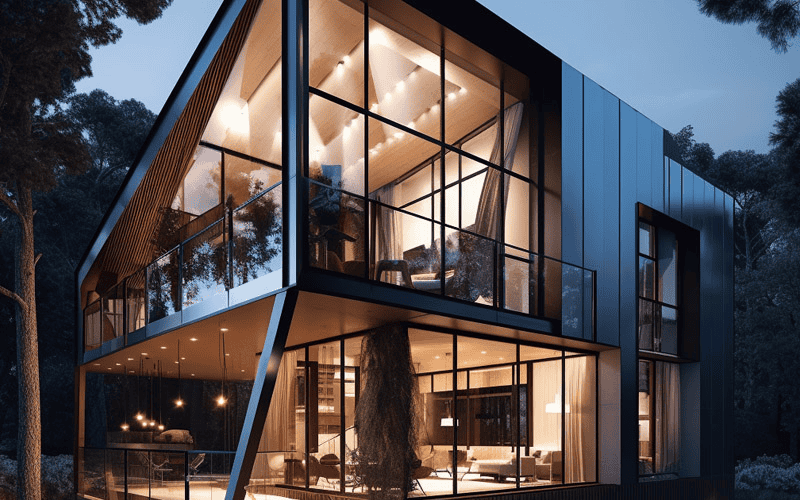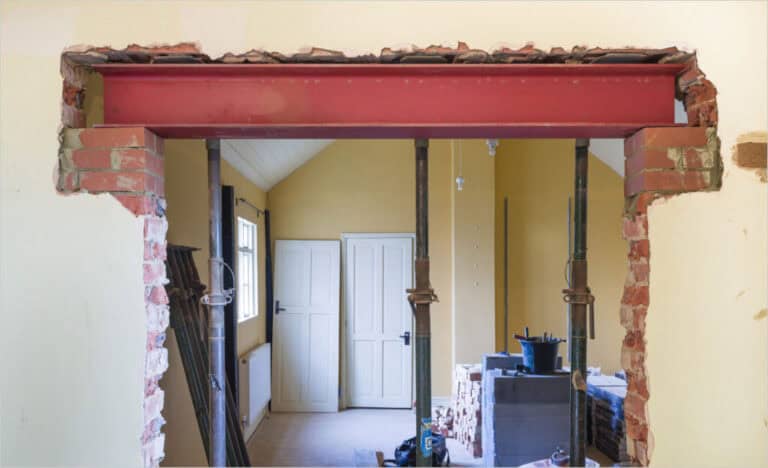Have you ever wondered what makes a house truly durable, cost-efficient, and sustainable? In today’s world, where natural disasters, rising energy costs, and environmental concerns are becoming more pressing, the choice of building materials has never been more critical. Steel houses are emerging as a modern solution to many of these challenges, offering unique benefits that go beyond traditional construction methods.
In this guide, we’ll explore the advantages and disadvantages of steel frame houses, helping you weigh their strengths and weaknesses. You’ll also learn how to determine if a steel house is the right fit for your needs and lifestyle. Whether you’re prioritizing safety, seeking eco-friendly options, or planning for future flexibility, this article will provide you with the insights to make an informed decision.
By the end, you’ll have a clearer picture of what steel construction can offer and how it compares to other options. Let’s dive in and find out if a steel house is the perfect match for your next home.
Advantages of Steel Houses
1. Strength and Durability – Steel is one of the strongest materials. Your house will stay stable in harsh weather, strong winds, or even earthquakes. It ensures safety and allows for spacious, open designs.
2. Long-Lasting – Steel houses need little maintenance and last for decades. Unlike traditional homes, they don’t require frequent repairs or replacements, saving you time and money.
3. Fast Construction – Prefabricated steel parts make assembly quick. Your home can be completed in weeks, saving time and reducing labor costs.
4. Pest-Free – Steel is resistant to termites and other pests. You won’t need pest control treatments or worry about structural damage caused by insects.
5. Weather and Moisture Resistance – Treated steel resists moisture, rust, and mold. It performs well in humid or coastal areas where other materials might fail. Protective coatings enhance its durability.
6. Modular and Flexible Design – Steel’s modular design makes renovations and expansions easy. It supports open layouts, large windows, and modern architectural styles.
7. Eco-Friendly – Steel is recyclable and has a lower carbon footprint than wood or concrete. Its lighter weight reduces fuel use during transportation. It’s also energy-efficient, requiring less heating and cooling in extreme climates.
Disadvantages of Steel Houses
1. Higher Initial Costs – Building with steel costs more upfront than traditional methods, often 10-20% higher. While long-term savings on maintenance can offset this, the initial investment is higher.
2. Thermal Bridging – Steel conducts heat far better than wood. This can reduce wall insulation efficiency by up to 60%. Extra insulation is often needed to maintain energy efficiency in extreme climates.
3. Fire Resistance Issues – Steel loses strength at high temperatures. It is less fire-resistant than concrete and may not be ideal for areas prone to wildfires.
4. Less On-Site Flexibility – Steel parts are prefabricated. They cannot be easily adjusted on-site, and errors in manufacturing or measurements can delay the project.
5. Noise Levels – Steel frames can carry sound easily. Without proper soundproofing, this can lead to a noisy environment, especially in urban areas or multi-story homes.
Related Reading:
Is Steel Good for Soundproofing? This Might Not Be What You Think
6. Heavy Material – Steel is heavier than wood. This requires a stronger foundation, which can increase construction complexity and cost.
How to Determine if a Steel House is Right for You

If safety and long-term reliability are your primary concerns, steel houses could be your best choice. Additionally, if you value design flexibility or sustainability, steel can also meet these needs. Below, we’ve divided the decision factors into core needs and additional benefits to help you quickly assess your situation.
Core Needs
1. Do You Live in a High-Risk Area?
If you live in a region prone to earthquakes, hurricanes, or extreme weather, steel’s strength and durability make it an excellent choice. Its resilience provides long-term protection for your home and family.
2. Do You Want to Minimize Maintenance?
Steel houses are low-maintenance. Unlike wood, they don’t rot, warp, or attract pests. This means fewer repairs, saving you time and money over the years. If you plan to live in your home long-term, this can be a major advantage.
3. Do You Live in a Pest-Prone or Humid Area?
If termites, mold, or moisture are concerns where you live, steel is a smart choice. It’s naturally resistant to pests and doesn’t rot or mold, even in humid or coastal climates.

Additional Benefits
4. Do You Need Your Home Built Quickly?
If you’re on a tight timeline, steel’s fast construction process is a big plus. Prefabricated components allow for assembly in weeks instead of months, helping you move in sooner and save on labor costs.
5. Do You Want a Flexible, Future-Ready Design?
If you value the ability to customize your home or expand in the future, steel’s modular design makes renovations simple. It supports open layouts, large windows, and other modern architectural styles.

6. Do You Care About Sustainability?
Steel is recyclable and eco-friendly, making it a great option for environmentally conscious homeowners. Its lower carbon footprint and energy efficiency also reduce heating and cooling costs.
7. Can You Handle the Higher Initial Costs?
Steel houses typically cost more upfront than traditional options. However, the durability and low maintenance can save money over time. If your budget allows for a higher initial investment, steel can be a cost-effective long-term solution.
8. Do You Prefer Prefabrication Over On-Site Customization?
If you’re okay with prefabricated components that are manufactured off-site, a steel house might suit you. However, if you anticipate needing significant on-site changes, steel may not be the best choice due to its limited flexibility during construction.
Key Takeaways
If safety, durability, and low maintenance are your primary concerns, steel houses address these core needs exceptionally well. For those looking for additional benefits like fast construction, design flexibility, and sustainability, steel also provides strong value. However, be sure to weigh the higher upfront costs and prefabrication requirements before making your decision.
Still Got Questions?
We understand that deciding whether a steel house is right for you can be complex. While this guide provides a starting point, every situation is unique, and a simple checklist might not cover all your needs. That’s why we offer professional consultation services to help you make the best decision for your circumstances.
With over 20 years of experience and 1,000+ successful projects, our team has the expertise to guide you through every step of the process. From assessing your requirements to planning, designing, manufacturing, and even shipping, we’re here to provide a one-stop solution tailored to your needs. Whether you’re considering a full custom design or one of our versatile Steel Home Kits, we ensure a seamless experience from start to finish.
Contact us today to discuss your project and see how we can turn your vision into reality with our proven steel construction expertise.

